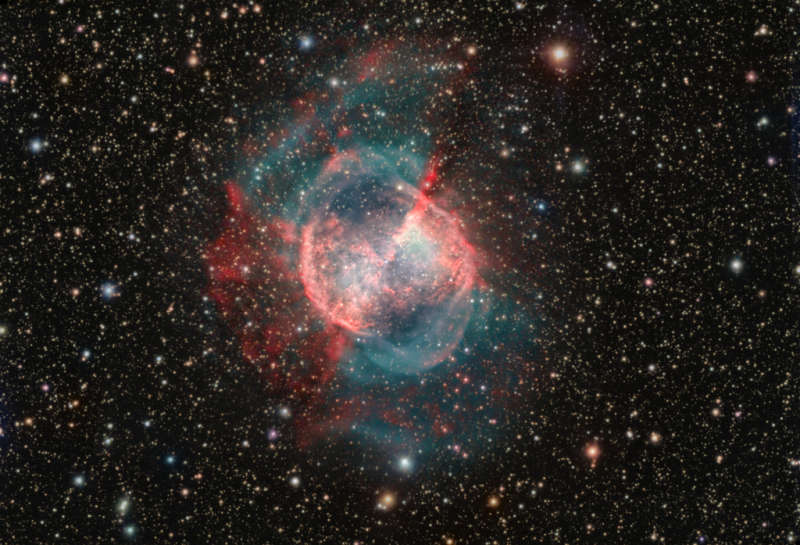Credit & Copyright: Francesco Sferlazza, Franco Sgueglia
Explanation:
While hunting for comets in the skies above 18th century France,
astronomer
Charles Messier
diligently kept a list of the things
encountered during his telescopic expeditions
that were definitely not comets.
This is number 27 on his
now famous not-a-comet
list.
In fact, 21st century astronomers would identify it as a
planetary
nebula, but it's not a planet either, even though it may
appear round and
planet-like in a small telescope.
Messier 27 (M27) is an excellent example of a gaseous emission nebula
created as a sun-like star runs out
of nuclear fuel in its core.
The nebula forms as the star's outer layers are expelled into
space, with a visible glow generated by atoms excited by the dying
star's intense but invisible
ultraviolet light.
Known by the popular name of the
Dumbbell
Nebula,
the beautifully symmetric interstellar gas cloud
is over 2.5 light-years across and about 1,200 light-years away in the
constellation
Vulpecula.
This impressive color image highlights details within
the well-studied central region and fainter, seldom imaged
features in the nebula's outer halo.
1999 2000 2001 2002 2003 2004 2005 2006 2007 2008 2009 2010 2011 2012 2013 2014 2015 2016 2017 2018 2019 2020 2021 2022 2023 2024 2025 |
Yanvar' Fevral' Mart Aprel' Mai Iyun' Iyul' Avgust Sentyabr' Oktyabr' Noyabr' Dekabr' |
NASA Web Site Statements, Warnings, and Disclaimers
NASA Official: Jay Norris. Specific rights apply.
A service of: LHEA at NASA / GSFC
& Michigan Tech. U.
|
Publikacii s klyuchevymi slovami:
M 27 - dumbbell nebula - Tumannost' Gantel' - Planetarnaya tumannost'
Publikacii so slovami: M 27 - dumbbell nebula - Tumannost' Gantel' - Planetarnaya tumannost' | |
Sm. takzhe:
Vse publikacii na tu zhe temu >> | |
